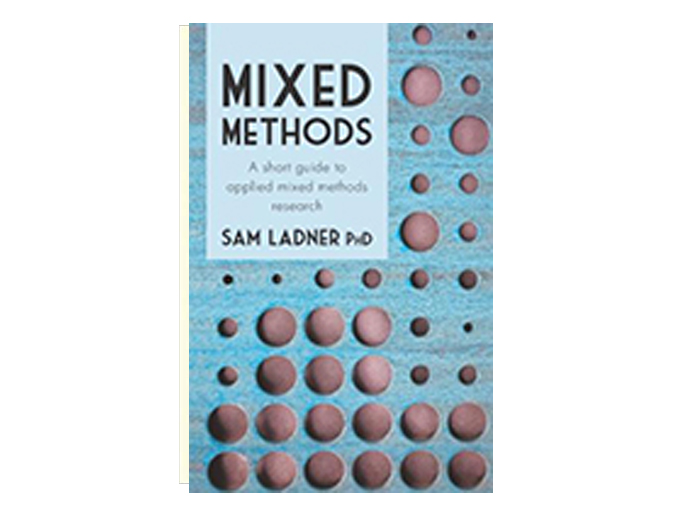Mixed Methods: A Short Guide to Applied Mixed Methods Research by Sam Ladner, PhD
Mixed Methods lays out the strengths and limitations of both qualitative and quantitative methods, explores the assumptions of each, and provides a step-by-step process for conducting a qualitative-and-quantitative (mixed methods) study. The author, Dr. Sam Ladner, is a sociologist who studies technology use, particularly in the workplace, and has published widely on the topic of applied research methods. She has worked at major technology companies, including Microsoft and Amazon, and currently works as a principal researcher at Workday, a software business company that provides cloud applications for finance, human resources, and planning.
This book began as a webinar Ladner gave to the Ethnographic Praxis in Industry Conference (EPIC) in March 2019.
Mixed Methods is a guide for applied researchers who want to expand their toolbox of methods. It will be of particular value to researchers who have gaps in their methods training, who tend to default to the same handful of methods, or those who have learned different methods without a full understanding of the reasons for choosing one over another. Researchers conducting quantitative or qualitative applied research and seeking to utilize the most fitting and fruitful mixed methods will find direction in Ladner’s book.
The book is thought-provoking. The author’s foundational belief is that the divide between qual and quant research is counterproductive and should be bridged. It outlines the benefits of mixing methods: one method will inform and improve the other; each method can enhance the understanding of the data produced by the other method; mixing enables the asking of a wider array of questions; and a follow-up method can corroborate earlier data or resolve earlier contradictory findings.
Ladner feels mixing methods is especially appropriate when the topic is complex and stakeholders need to understand it fully, or when the stakeholders “speak numbers” and need quantitative findings to feel they understand and can permit themselves to believe.
The scope of Mixed Methods spans theory and practice. Ladner explores the philosophical differences between qual and quant research and makes the case for employing both. Her explication of different views (constructivism versus objectivism) and different frames (deductive versus inductive) illuminates why both methods are so valuable. Clear discussion of academic theory is substantiated by examples of real-world challenges and practical advice for researchers in a corporate setting. Researchers will gain new insights into designing a mixed methods project, bolstered by an understanding of the theoretical underpinnings of each method.
Qual researchers will recognize a kindred spirit in Ladner. She understands that making sense of quantitative data is one of research’s biggest challenges. Ladner outlines how quant may ask “How often?” and “What’s affecting what?” But qual, by addressing “What is the overall nature of this thing?” and “What does this experience feel like?” can make sense of a complete system, not just its constituent parts, and explain the reasons why things happen the way they do. She clearly appreciates the power of qual: “Explanation is perhaps the most underrated strength of qualitative research.”
Ladner honors the importance of the consumer, declaring, “The customer takes center stage in qualitative research,” and affirming that “innovative companies fall in love with their customers.” She captures the prevalent dynamic all qual researchers will recognize: “Producing knowledge is a chaotic and messy process.”
In advocating for the humanizing and empathetic contributions of qual research, Ladner observes the need for superior understanding, intuition, wisdom, and interpretation in the research world: “We are drowning in an endless sea of data, yet we are stuck in an insight desert.” Data has never been more abundant or ascendant, but “just because we have more data doesn’t mean we are doing better research.”
Mixed Methods champions the advantages of employing mixed methods in research and provides practical guidance. For an applied researcher, it also provides a grounding in academic theory which will enrich their understanding and judicious use of methods.


Be the first to comment